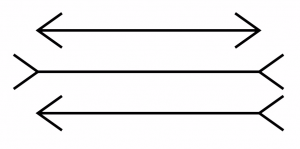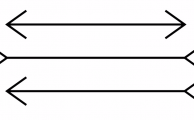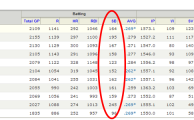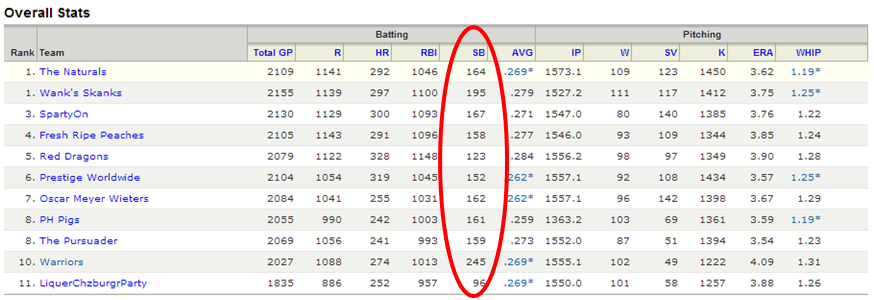In this edition of “Smart Elsewhere“, we take a look at the TINSTAAPP podcast started recently by Doug Thorburn and Paul Sporer.
About The Duo
Paul Sporer’s work can be found all over the web, but he’s most known for his Starting Pitchers Guide series, his work at Baseball Prospectus, and his own blog, PaulSporer.com.
Doug has a pitching mechanics background and worked for a time at the National Pitching Association and does great work on analyzing MLB pitchers’ mechanics (you can see a great sample here).
Paul and Doug teamed up this year on the 2013 Starting Pitchers Guide. This guide, originally started by Sporer several years ago, is a lengthy and in-depth look at hundreds of starting pitchers, Paul’s expectations for the season, statistical analysis and more. He added Doug’s work on pitching mechanics to the guide this year.
About The Podcast
These two team up about once each week and pump out a three or four hour podcast dedicated exclusively to pitching. It’s a lot to take in, but it’s great content. The information is not directly from a fantasy baseball perspective, although Paul will very frequently mix in his thoughts and how their discussions relate to fantasy baseball.
One mission of the podcast is to explain that poor pitching performances are not simply the result of bad BABIP luck, unlucky strand rates, or flukey home run rates. Poor and inconsistent mechanics result in the inability to locate pitches and problems with command and control. They seek to diagnose the specific reasons why pitchers are struggling and determine if and how things can be corrected.
The 10% Pitch
In an earlier TINSTAAPP episode the two made a passing reference to the phrase “a 10% pitch”. It was a quick mention, but the implication was that if a pitcher can add a third pitch that can be thrown 10% of the time, that it can have a dramatic impact on the pitcher’s results.
This piqued my interested greatly because as you may recall, over a month ago we learned that Max Scherzer began using a curveball much more frequently than in the past. He’s throwing it about 10% of the time in 2013. With this in mind I then launched a quest to find other pitchers throwing new pitches in 2013.
Hearing Doug and Paul mention this “10% pitch”, I needed to know more. So I e-mailed them to get a better explanation.
The Response
My e-mail was actually read and addressed on the June 25th episode (links below, my e-mail is referenced at about the 1 hour 45 minute mark if you want to hear the audio). Sporer and Thorburn offer two explanations as to why adding an effective pitch that can be thrown at least 10% of the time is a big deal:
- Paul points out that besides the fastball, pitchers need to have at least one more effective pitch for facing opposite-handed batters (typically a slider thrown by a right-handed pitcher is effective against right-handed batters, but not as effective to left-handed batters). So in effect, a pitcher needs a second pitch that is effective to same-handed batters and a third pitch that is effective against opposite-handed batters. When a pitcher adds a new “10% pitch”, it’s often indicative that they are adding a pitch intended to face these opposite handed-hitters that they currently don’t have an effective second pitch for. If you consider that this “10% pitch” will be focused on batters on one side of the plate, it’s more than likely a 20% or more pitch to batters on that side (and closer to 0% to the same-handed batters).
- Doug answered from a straight probability point of view and his response made great sense to me. He gives the simplistic example of dividing the strike zone into four even quadrants (from the hitter’s point of view: up and in, down and in, up and away, low and away). A pitcher with one pitch can allocate pitch location to each of the four quadrants, giving a 25% likelihood that this one pitch will be thrown in a given quadrant. If you mix in a second pitch, that increases the available options to eight (pitch #1 in each of the four locations, pitch #2 in each of the four locations). From a probability standpoint, this means a 12.5% likelihood that a hitter could correctly guess pitch type and location. And if you now add a third pitch, you have 12 options. This means only an 8.33% likelihood that a hitter could guess pitch type and location correctly.
Applying This
Not only might it be a good idea to revisit the process to find pitchers throwing new pitches to identify those with a new 10% pitch, it’s a great tool to keep in mind for pitchers to target prior to next season. Sporer and Thorburn spend a great deal of time talking about how Shelby Miller really only has a fastball and a curveball and has not yet developed another 10% pitch. But you can see from the usage data at BrooksBaseball.net that Miller is working on a changeup. If he can add this as a legitimate pitch in his arsenal, he may be a top ace as early as next year.
Make smart choices. If you haven’t already done so, please follow me on Twitter if you find the work on this site worthwhile. Thanks for reading.
Links To The Podcast

It sounded like something I could potentially apply to fantasy baseball, so I gave it a shot.
 Think of the popular optical illusion shown here. (more…)
Think of the popular optical illusion shown here. (more…)









